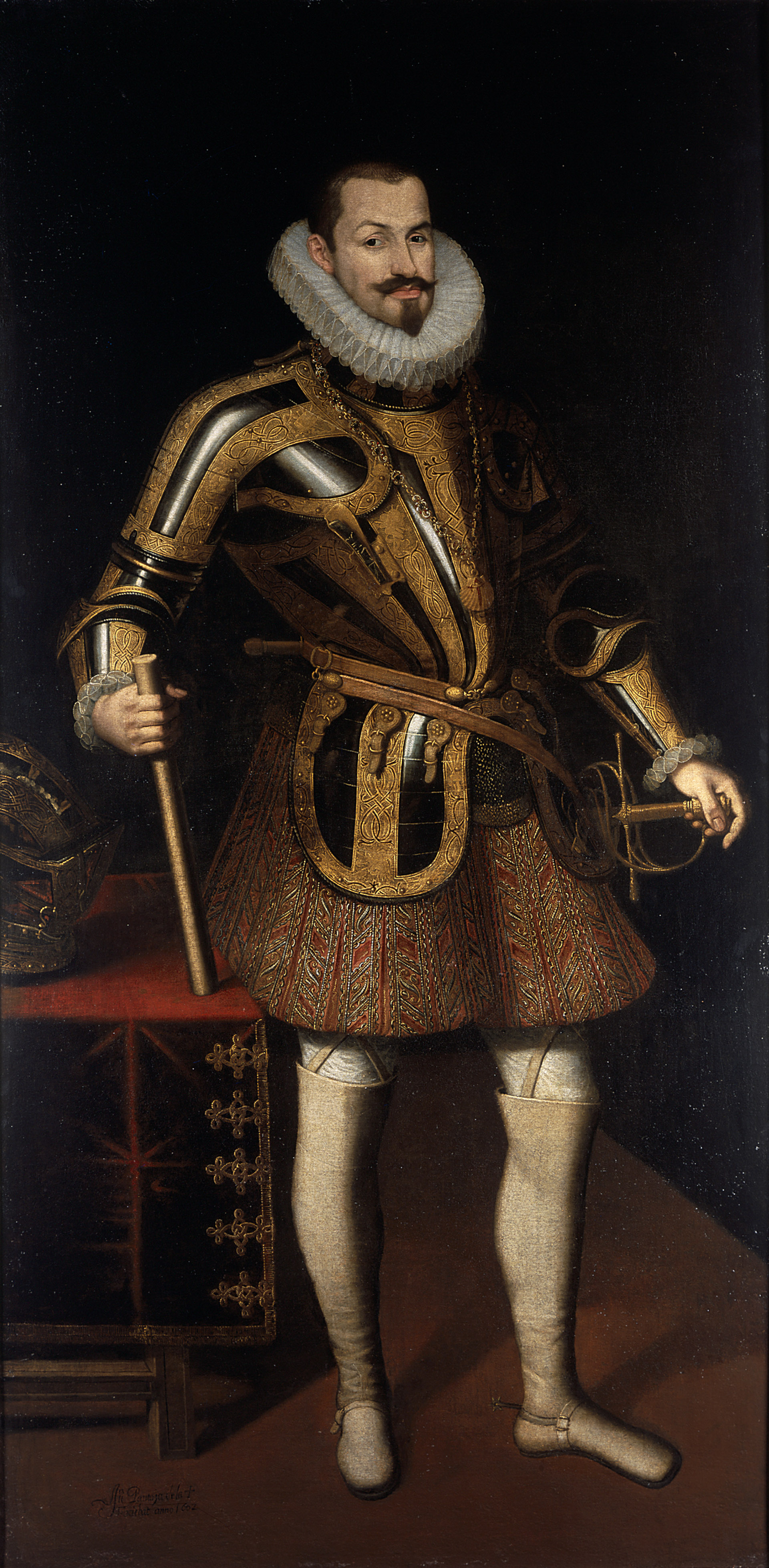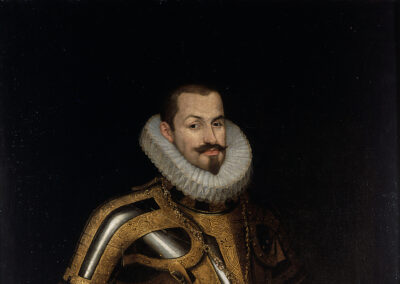Although painted, together with that of his wife, Catalina de la Cerda, in 1602 -according to the signatures of both-, it does not appear in the inventories of the Duke of Lerma until 1607, a date in accordance with a letter of payment in which both portraits appear together with those of the kings Philip III and Margaret of Austria: "[...]. for four portraits that he made for the service of His Excellency, two of Their Majesties and two others of the said Duke and the Duchess of the Order."M. Kusche 2007] The four portraits mentioned in both documents passed from the collection of the House of Lerma to that of Medinaceli at the end of the 17th century, being divided up in the will of the 15th Duke of Medinaceli, in which the portraits of the kings went to the Duke of Tarifa, whose widow, in 1934, bequeathed them, along with other paintings, to the Museo del Prado, where they remain under the catalogue numbers P002562 and P002563.
In this full-length portrait, in blued half-armour, holding a baton in his right hand and his left hand on the hilt of his sword, the artist follows the same meticulous composition and the Valide uses the same type of attire and poses in almost identical gesture as in the portrait of the king. The Duke of Lerma's intention to portray himself as the king's alter ego is even clearer if we consider that before this portrait, around 1598, when he had just been appointed Valide, he commissioned Pantoja de la Cruz to paint his second son, the future Count of Saldaña. For this portrait, the first he painted for the family, Pantoja used as a model the portraits he had painted of the then Prince Philip around 1592 and 1594. Comparing the two noble portraits with their royal models, María Kusche arrived at the same impressions for both: the alert, mature, energetic, confident and astute gaze of the former as opposed to the weakness, indecision and aloofness of the latter, which leads her to conclude that this "portrait of the Count of Saldaña is a portrait of the Count of Saldaña".imposing portrait [...] illustrates more than all the historical enquiries the situation of the new Kingdom".




